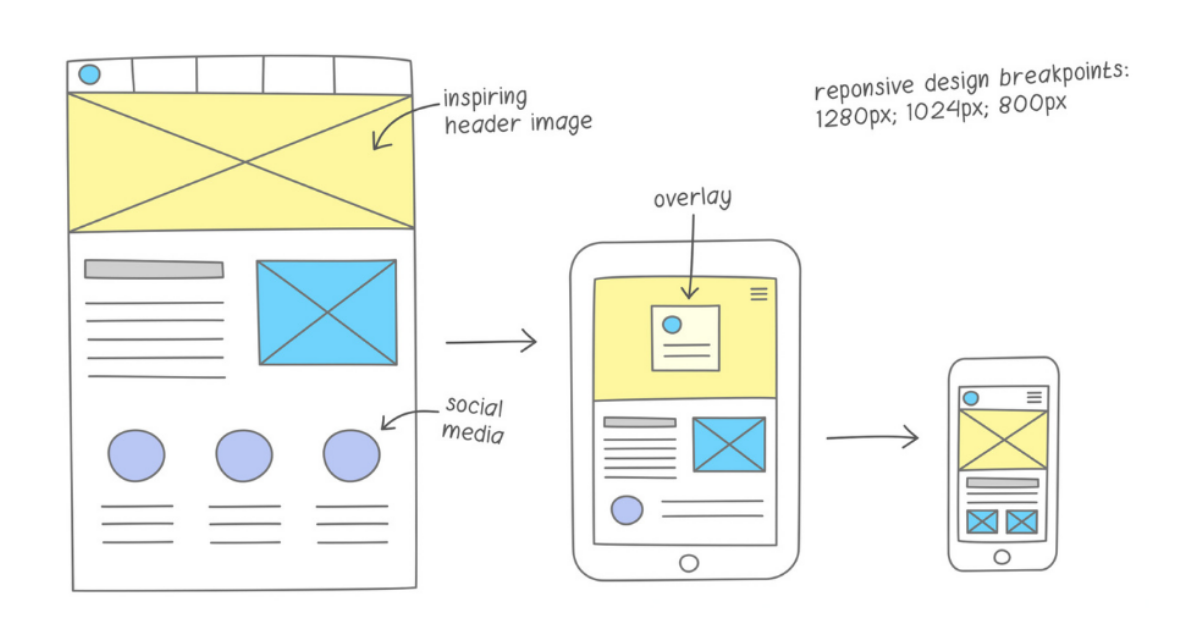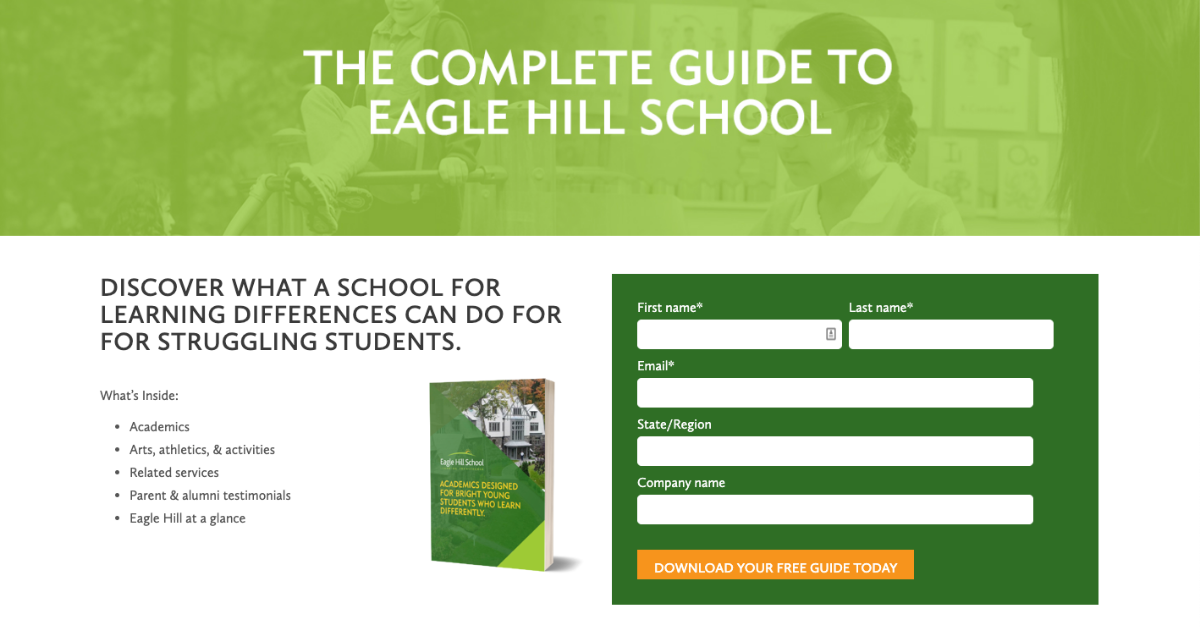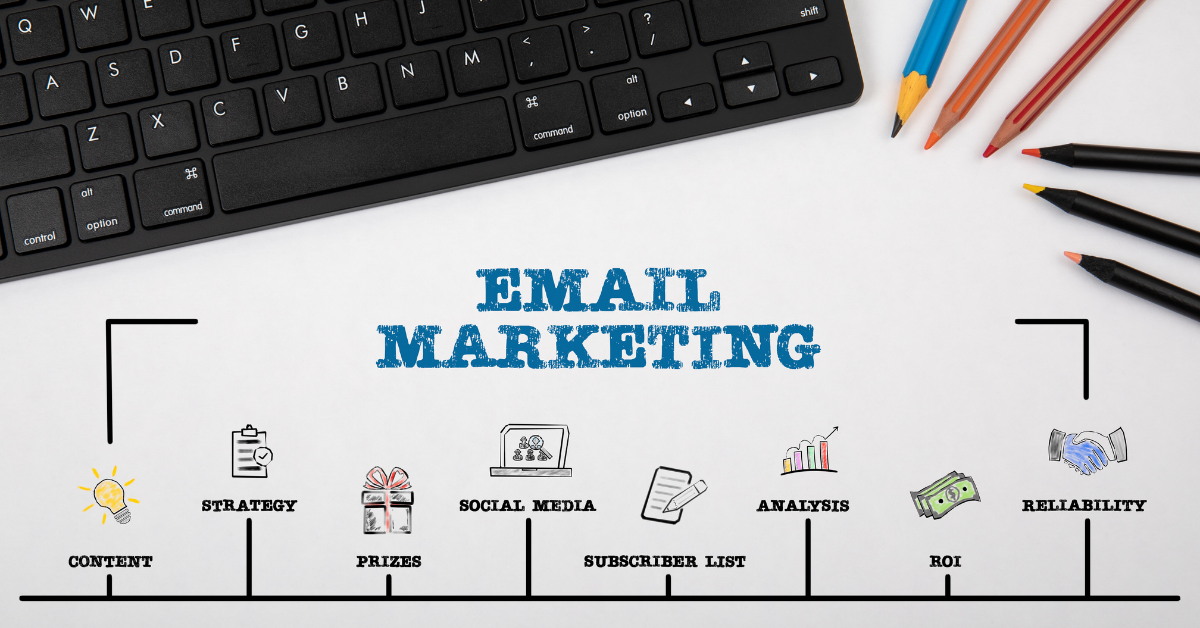The main goals of academic institutions should be to provide students with quality education and increase enrollment rates. If you're in the process of reworking your marketing strategy, you've come to the right place.
We detail the key performance indicators (KPIs) that you need to monitor when it comes to marketing education and provide some tactics to ensure your marketing strategy is as effective as it can be.
Website Session Visits
The first KPI you’ll want to keep track of is website session visits, which mark the number of times people visit your website. Keep in mind this KPI tracks both new website visitors and returning users who repeatedly visit your website.
Making sure your website is optimized for every view is just one of the many things to keep in mind when designing your website. Social media integrations help keep things consistent across your digital real estate.
Strategies to Increase Website Visits
If your site isn't getting the amount of traffic you expect, there are several marketing tactics you can leverage to boost this metric.
Improve Website Design
If website visits are a KPI you want to improve, then it might be time to reconsider both the look and functionality of your website. It's essential that your website is well-designed and provides relevant information to increase the number of visitors you have each month.
Sometimes a site is too busy for visitors, making it difficult to navigate. Sometimes it’s laid out in a way that isn’t intuitive and confuses users.
A straightforward way to test whether your current layout is performing is by conducting an A/B test on your landing pages.
Experiment with different keywords, images, static and video content, plus different color palates to determine what your audience responds to.
On a smaller scale, you could alternate the calls-to-action (CTAs) and forms that appear throughout your site to see which convert the most leads.
Speed Up Loading Time
Take a look to see if your web pages are loading slowly; this could mean that you have too many things on the pages. When a page doesn't load quickly, people are more likely to leave, which will increase your bounce rate over time.
Oftentimes, a page takes a while to load because the images there are too large. Identifying the ideal resolution of your media before you post it to the site can help tremendously, especially when the size is optimized for desktop, mobile, and tablet browsers.
Leverage SEO-Rich Text
There’s value in making sure the language you’re using across the site is casting a wide enough net to reel in the different searches your audience conducts. A thorough review of your sitemap, as well as an audit of each page’s performance, can give you an idea of where people are dropping off.
Consistently posting blogs or articles is another effective way to improve your SEO score. Packing lists for the first semester at college, reading recommendations, and alumni spotlights are just a few content ideas to get you started. Additional benefits of publishing evergreen content are the opportunity to repost to social for more click-throughs back to your website.
Provide Accessibility
When something exists online, it’s available to everyone, and as such, should be accessible to all. Therefore, institutions have as much of an obligation to provide accommodations for students online as they do on campus. Providing an ADA-compliant website is a way to demonstrate accessibility while improving the site’s usability.
From alt-text on images to digitized PDFs—there are several ways to keep up with the latest ADA guidelines, and it’s also possible to roll out these fixes automatically.
Conversion Rate
If your site has consistent or even heavy traffic, it means your content is pulling in visitors. But if they’re not taking any action, like filling out an application or enrolling in an upcoming event, then it’s time to examine the effectiveness of your calls-to-action (CTAs) and their conversion rates.
The conversion rate KPI is self-explanatory; it's the percentage of people who visit the school's website and do what you'd like them to do. The reason it's essential to monitor your conversion rates is that they give key insight into how successful your marketing efforts are.
If you have a higher conversion rate, your marketing campaigns are reaching the desired audience, and the outcome is an increase in enrollment.
If your conversion rate is lower than you'd like it to be, it's time to reconsider the education marketing campaign you've launched and rework some things to ensure increased success in the future.
An eBook that highlights the history and benefits of your institution is a great way to collect Marketing Qualified Leads (MQLs).
Strategies to Improve Conversion
Of course, the tactics you use will depend on which step in the enrollment funnel process your prospects are in. If people are at the beginning stages of the enrollment funnel, they're just potential prospects. They should be exposed to different types of content than someone who’s halfway done with their application.
Top of the Funnel (TOFU) Opportunities
TOFU refers to any leads acquired who are in the information-gathering part of their journey. These leads are generally quantified by website visits and newsletter subscribers. We’ve already covered how you can improve visits and the stickiness of your CTAs, so how do you move these subscribers down the funnel?
Mid-Funnel (MOFU) Opportunities
MOFU refers to marketing qualified leads, those who’ve downloaded content or attended an open house, indicating their interest in your institution. Having that content ready to go or making sure that the event is well-promoted are just a few options to honing in on MOFU opportunities.
These individuals are just a few steps away from becoming applicant leads, so what can be done to maximize the ROI of your conversion marketing efforts?
Bottom of the Funnel (BOFU)
Opportunities BOFU refers to sales leads- or in your case true prospective applicants - and can be measured by the number of qualified leads compared to the number of applicants.
How many individuals who downloaded content ended up filling out an application? How many of those candidates abandoned their applications, and at what point?
These are just a few of the questions you can ask yourself when working to improve your BOFU conversion rate.
ROI for Admissions and Marketing
The return on investment refers to what happens as a direct result of your marketing efforts. For example, if you're spending a significant amount of money on getting people to enroll in your school, the ROI would be an increase in enrollment numbers.
The admissions and applications KPIs go hand in hand with ROI because only when a student is fully enrolled does the sale cycle close. A higher ROI means the marketing and admissions teams are working in tandem to ensure that all enrollment and marketing goals are being achieved.
Strategies to Boost ROI for Admissions
Now that we've given you some information about the best KPIs to track as you launch your digital marketing campaigns, here are some tactics that you can use to increase your marketing success.
Use Social Media
People spend 145 minutes on average scrolling through social media every day. This gives you several opportunities to deploy ads to people looking for a place to continue their education.
When using social media for your marketing campaigns, you need to ensure that you do some research before beginning the campaign. You'll want to research the type of content that your target audience responds to the most.
You'll also need to have an idea of when your audience is online the most and when they're engaging with posts. Equipped with this information, you can develop a way to publish content during these times to increase post engagement.
Create Targeted Nurture Email Campaigns
Email nurturing campaigns are similar to building a relationship with a potential student and leading them through the enrollment funnel more personally.
Emails allow you to add a level of personalization that you can't get when posting on social media or other digital platforms.
If this is a tactic you're going to use, one of the first things you need to do is make all forms easy to find and download. If someone has a hard time finding your application, it will frustrate them and could decrease the chances of them enrolling in your school.
Another factor to keep in mind is to show potential students how enrolling at your institution is of value to them. You need to do this without sounding like an annoying salesperson.
Focus on the Data
One of the benefits of using various digital platforms for marketing purposes is the data you receive in return. The data shows you several things such as:
- How well your content is performing
- The content followers enjoy the most
- How much engagement each post is getting
The data can help you to make the most of the marketing budget you currently have while finding ways to save money in the future. The data will also provide information about keywords you can use throughout future content to increase your search engine or SEO rankings.
Make Use of Video Content
Sometimes what you find interesting isn't going to be as engaging to someone else. If you plan to share information that people may not want to read or is more visual, video is a great way to share this information.
There are several ways to put video to good use for your school, including creating a PowerPoint or incorporating animation. More people are likely to watch your videos and click the links you provide if the video is engaging.
Before creating video content, we recommend writing a script. While it might seem easy to talk on camera, you want to ensure that you sound knowledgeable about the information you're sharing with viewers.
Use Paid Google Ads
Using Google Ads is helpful in many ways. The first is that it increases the number of qualified leads that have the potential to convert into people who enroll in your academic institution. By allowing you to target an audience by their demographics and geographical region, Google Ads can help you make sure that your ad is being seen by the right people.
This means that you can create ads specific to the type of student you want to enroll at your institution. Not only does this save money, but it increases the number of prospects you get each marketing quarter.
Another benefit of Google Ads and pay-per-click (PPC) is that you not only know that the impressions on your ad are qualified, but you also only pay for the number of clicks on the ad.
Several versions of an ad can be created with a smart budget set to reallocate spending to the higher-performing tactic, giving you insights into how to better present your content in the future. The metrics are presented in context so that you can see exactly how many conversions were brought in thanks to ads.

Marketing in Education 101
When it comes to marketing educational organizations, several KPIs need to be monitored to ensure your institution reaches each goal. KPIs include how many people are visiting your website, how many are applying, and ultimately your enrollment conversion rate.
The tactics reviewed above can help you improve your marketing strategy and goals. Are you looking to outsource your marketing efforts? If so, let the experts at Snyder Group Incorporated offer you the help you need to succeed!



